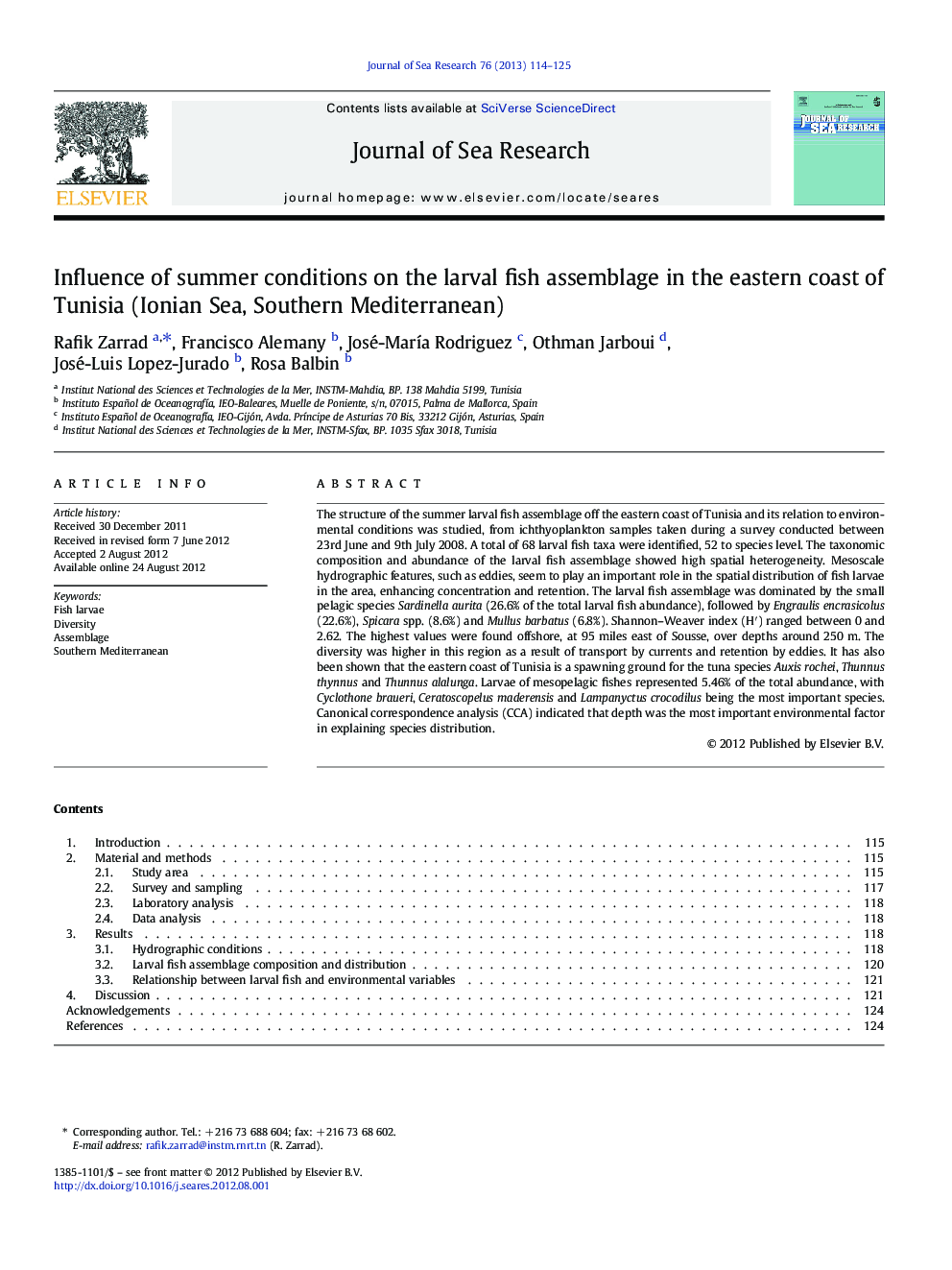| کد مقاله | کد نشریه | سال انتشار | مقاله انگلیسی | نسخه تمام متن |
|---|---|---|---|---|
| 4549890 | 1627498 | 2013 | 12 صفحه PDF | دانلود رایگان |

The structure of the summer larval fish assemblage off the eastern coast of Tunisia and its relation to environmental conditions was studied, from ichthyoplankton samples taken during a survey conducted between 23rd June and 9th July 2008. A total of 68 larval fish taxa were identified, 52 to species level. The taxonomic composition and abundance of the larval fish assemblage showed high spatial heterogeneity. Mesoscale hydrographic features, such as eddies, seem to play an important role in the spatial distribution of fish larvae in the area, enhancing concentration and retention. The larval fish assemblage was dominated by the small pelagic species Sardinella aurita (26.6% of the total larval fish abundance), followed by Engraulis encrasicolus (22.6%), Spicara spp. (8.6%) and Mullus barbatus (6.8%). Shannon–Weaver index (H′) ranged between 0 and 2.62. The highest values were found offshore, at 95 miles east of Sousse, over depths around 250 m. The diversity was higher in this region as a result of transport by currents and retention by eddies. It has also been shown that the eastern coast of Tunisia is a spawning ground for the tuna species Auxis rochei, Thunnus thynnus and Thunnus alalunga. Larvae of mesopelagic fishes represented 5.46% of the total abundance, with Cyclothone braueri, Ceratoscopelus maderensis and Lampanyctus crocodilus being the most important species. Canonical correspondence analysis (CCA) indicated that depth was the most important environmental factor in explaining species distribution.
► Larval fish distribution showed a marked heterogeneity related to depth.
► The Atlantic inflowing transported fish larvae from the spawning areas to the south.
► A southern eddy acted as a mechanism of retention and concentration.
► Larval fish could be split into two clusters of species: neritic and oceanic.
Journal: Journal of Sea Research - Volume 76, February 2013, Pages 114–125